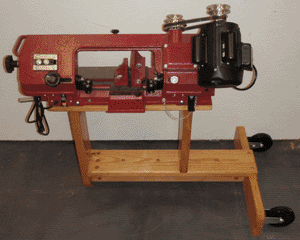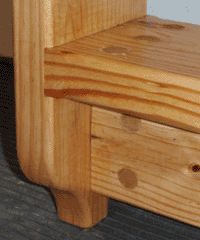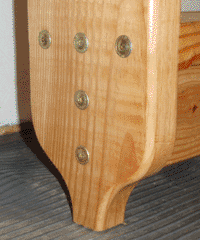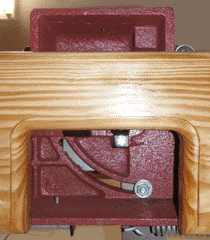



Since I began working with metal roughly a decade ago, my primary cutoff tool has been a hacksaw. Since my projects are typically small, this has been adequate, and with a high-quality 14TPI blade I have generally been able to cut pieces of steel up to 1/2" by 4" in cross-section without issue. However, some projects have required thicker stock or numerous cuts; in these cases the use of a hacksaw is tedious and fatiguing, so for this purpose I bought a small metal-cutting bandsaw from Harbor Freight. The saw itself is of surprisingly high quality, but the original stand was made of sheet metal and was unstable to the point of being dangerous, so I decided to build a replacement out of yellow pine, which can be seen above.
The triangular footprint of the stand allows the user to stand close to the saw, which is necessary when the saw is used in its vertical configuration. Furthermore, since the weight of the saw is centered to the rear (due to the weight of the motor), a wide support is unnecessary in the front. Like the original stand, this version has rigid casters mounted in the back, allowing the saw to move freely when the front end is lifted. The construction is fairly ordinary, with the exception being the use of dowels as anchor points for the screws which hold the joints together. These would otherwise be driven into end-grain, providing an unreliable joint. The finish is simple as well, consisting of a single coat of varnish, which I kept thin to avoid having metal chips become embedded later on.
In use, this new stand is practical and convenient, and has no tendency to tip back when the blade is lifted. It is vulnerable to tipping sideways, however, so for cutting long stock an external support is necessary for the workpiece. Overall this is a simple yet functional improvement to an otherwise ideal saw for the scale of work that I do.